AUTODESK UNIVERSITY’S ANNUAL EXPO took place in Las Vegas on November 18-21 with professionals in architecture, engineering, construction, manufacturing, and media pros in attendance. Autodesk offered a wide variety of classes and sessions reflecting the demand for new technologies for creating a better world, better environment, and better health and productivity.
Technology is helping to create a better world without a negative impact on the planet. Automation and AI were a key part of the discussion and the tools used to help redundant operations in manufacturing, building, and engineering perform with one click instead of multiple clicks.
Autodesk announced Construction Cloud with an integrated construction management platform with Assemble, Building Connected, BIM 360 and PlanGrid that connects with AutoCAD, Revit and Civil 3D. (see: Architosh, “Autodesk Ushers in New Era of Connected Construction with Autodesk Construction Cloud,” 20 Nov 19).
Build Change—Noted by Autodesk
Build Change was the recipient of the AU Las Vegas 2019 Donation Drive. Dr. Elizabeth Hausler from Build Change, a member of the Autodesk Foundation spoke at the keynote about how the loss of housing is on a much larger scale for natural disasters in places like Columbia, Iran, and Guatemala City.
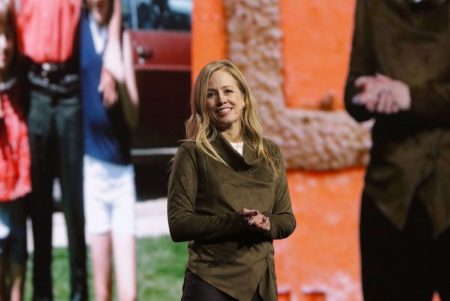
Dr. Elizabeth Hausler speaking at AU19 in Las Vegas, about her work at Building Change, a non-profit focused on resiliency solutions for housing in countries with substandard building construction and vulnerable construction. (image: Autodesk. All rights reserved.)
She spoke about how putting Geodesic homes in some of these environments is not a real solution as people who are allotted these homes find them alien to the way they live and didn’t have a say in the design and can’t trust them to be reliable. Autodesk provides software licenses, training and more for Build Change to solve these problems.
Build Change started using AutoCAD 15 years ago. Now they are automating doing “retrofit-design” with Revit and Dynamo; coding in Dynamo the structural retrofit rules and using Revit to complete the design process. AI technology can accelerate the identification and assessment of damage in homes in a destructive event like a hurricane or earthquake and show the scale of the destruction to give more accurate data through machine learning. What took 3 people 4 to 5 days in the past now takes 1 person 3 hours.

Images of Build Changes work and workflow using Autodesk Revit and Dynamo. (image: Architosh. All rights reserved.)
They are using AI to show how homes are assessed because it costs money to send people out in the field to do this manually. Individual assessments can be done when homeowners upload photos to the cloud, and the machine is trained with the data from the image captures to scan if the homes can be retrofitted. Technology should not leave out the people element. Revit and BIM 360 provide ways to use VR to give homeowners the ability to walk through the home design and give comments and participate in the design process.
Build Change creates housing solutions for about a half million people in substandard housing countries and Autodesk technology is helping them to do this better. Autodesk awarded Build Change at the keynote a half-million dollars to help them continue their mission to build safer homes around the world.
Walt Disney and Autodesk
Asa Kalama, Executive Creative Director at Walt Disney Imagineering spoke about Disney’s work on Star Wars Galaxy’s Edge. He spoke about how to build the experiences that people love from the stories they love. His team created a large-scale city design and seven spaceships—including 100-foot-long Millennial Falcon—worked with concept artists, graphic designers, architects, engineers to create over 600 different models that were fabricated for the Star Wars theme park.

Asa Kalama, Excutive Creative Director at Walt Disney Imagineering, speaking at AU19 about his teams and their use of Autodesk software solutions like Revit and BIM 360 along with Shotgun. Do you recognize the Millennium Falcon’s cockpick in orange on the left image? (image: All rights reserved.)
BIM 360 and Revit made it possible for teams from different disciplines to connect to create all these assets to completion. Autodesk Shotgun, primarily for props management, was used to coordinate assets and work between different teams allowing them to work together providing feedback and keeping the job on track. This was the largest expansion of the Disney Park ever created.
There are many other exciting announcements made during the keynotes at Autodesk University this year but these two above were notable. In this first of two major feature reports from AU19—not to mention several smaller reports on Architosh already published and in the pipeline—we focus on some major items from the Expo floor. (note: we have highlighted Autodesk products in blue when they integrate with third-party tools noted below).
Unity
Unity formed a partnership with Autodesk in 2018. At AU19 this year they announced the next phase of that collaboration. There are several aspects of the Autodesk + Unity partnership touching on multiple Autodesk products across disciplines.
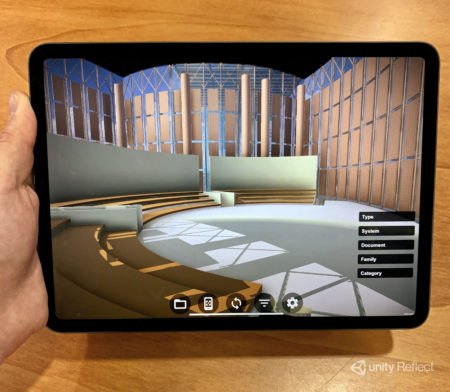
Unity’s Unity Reflect for Revit transforms collaboration workflows with AEC stakeholders by delivering live-sync BIM model and meta data to multiple stakeholders for building and infrastructure projects. Shown here on Apple iPad. (image: Autodesk. All rights reserved.)
One key one is Unity Reflect for Revit and BIM 360 which we have a dedicated report on. (see: Architosh, “AU19: Autodesk and Unity Tout New Unity Reflect at AU—Available Today,” 2 Dec 2019)
- Unity and Autodesk Revit: enhanced interoperability to reduce time and money for designers and engineers in visualization workflows, using Unity Reflect. Interoperability helps users know they are using the very latest BIM model, optimized for downstream interactive 3D to create high fidelity Unity applications such as interactive walkthroughs or collaborative construction solutions. It will create streamline workflows importing BIM data visualizations directly from Revit into Unity Reflect and Unity projects.
- Unity and Autodesk VRED: reduced time to market and more performant, reliable products for Automotive. The integration will help make it easier to reuse high fidelity VRED data (environments, lighting, materials, and animation) directly inside Unity and run them on 25+ platforms including PC, VR/AR, and mobile.
- Unity and Autodesk Shotgun: offering increased productivity on projects in Media and Entertainment (M&E). Unity and Autodesk are working on an integrated solution for teams in managing multiple types of assets in production. Artists won’t have to worry about managing their files and can focus on their creative flow. Animators and modelers will be able to work in the context of a sequence with real-time feedback on changes to the scene file including lighting, camera location, or asset selection. Supervisors can track the analytics for a more accurate evaluation of artist management. I imagine this is what was used in the movie The Lion King.
Unity is creating a way to save time and money giving you an accurate model that can be imported back into Unity and using 3DS Max can give you the ability to do smart and high-fidelity visualization.
Twinmotion 2020
Twinmotion 2020 was on the show floor at Autodesk University giving us a preview into the new version with better photorealistic images, better characters, better vegetation, and better rendering.
Some of the new features we saw in the booth
- Growth allows you to scale vegetation by age. Trees get younger or older and grow instantly.
- Improved new characters including animated characters with new controls. The new characters have better animation and a better selection of clothing.
- Improved vegetation with incredible detail views. Growth was just one of the tools demonstrated.
- Depth of field control. You can move where you want depth of field to be in the scene, this is pretty cool.
- An X-ray mode that was demonstrated to show where piping and ducts were in a model, a very convincing display scene.
- Improved rendering
- Improved textures
- Improved syncing
Twinmotion works with Autodesk Revit but also works with other CAD and BIM tools. We have much more to say about Twinmotion and its goals in AEC in a special feature in the December issue of the free INSIDER Xpresso newsletter (due 4 Dec)
Twinmotion 2020 will be a big release and worth the price of buying it (no set price yet) to help architects, engineers, production artists, and other visualization artists create one-click solutions that will be more powerful with this release. We can see in future updates a connection to the Unreal Engine is on the roadmap, giving artists who want to learn Unreal Engine a great starting point. Again, for the reader interested in what is really coming next for Twinmotion and Unreal Engine sign-up for our Xpresso newsletter. If you sign-up after 4 December 2019, you can visit the past issues and link to issue #10.
NVIDIA
NVIDIA’s RTX technology is empowering designers in “visualization” from architectural design to virtual production with a powerful GPU solution. Real-time rendering has never been so powerful as with RTX Technology.
- NVIDIA booth on the show floor showed off the NVIDIA CloudXR technology that delivers low latency AR/VR streaming. A car appears on your mobile phone when you point to a location. Live-streaming to the mobile device using CloudXR technology; it is amazing technology. An incredible way to share visual design elements.
- Luxion Keyshot 9 integrated with the NVIDIA OptiX raytracing engine for quick realistic images with animations driven by RTX Ray tracing and AI denoising. This gives quick real-time response in Keyshot with high fidelity photo realism.
- Chaos Group V-Ray with RTX technology was able to do real-time ray tracing and rendering using Project Lavina. This was the very latest Lavina code base. Project Lavina can ray trace huge 3D scenes without the workarounds or raster graphics. Artists can drag and drop their V-Ray scenes to see them in real-time without the complex set up of the game engine workflow found currently. It was really fast and didn’t disappoint!
- Virtual production pipelines are accelerated with Quadro Virtual Data Center Workstations on NVIDIA RTX servers. These were in the booth running several demos at once and they were quite impressive.
- Unreal Engine had their real-time VR experience of the Apollo Moon Landing doing real-time renders of photorealistic animations on RTX cards. This was inside the Unreal booth but again based on RTX technology.
RTX technology has become the leader in GPU rendering and real-time visualization. NVIDIA keeps pushing its technology further to see what it can do. AI is helping them automate tasks in visualization workflows.
This is technology, by the way, that is missing on the Apple macOS platform and saw heated backlash by many VFX and visualization pros after Apple announced their 2019 Mac Pro with apparently concerning support for Nvidia inside this amazing new machine. You can sign a petition now 18k strong asking Apple to work with Nvidia on CUDA and RTX support for future Macs, here.
AMD
AMD was showing off its new GPU AMD Radeon Graphics solution in its W5700 card, the world’s first 7nm professional workstation graphics card. This is a mid-range card that challenges the NVIDIA Quadro RTX 4000 by price and consistency when rendering.

AMD’s latest professional graphics cards aimed at AEC pros, the Radeon Pro W5700, the first AMD card built on a 7nm process. (image: Akiko Ashley / Architosh. All rights reserved.)
According to AMD stats, 86% of AEC users use mid-range computers, and this card delivers a powerful solution for users at a lower cost and delivers the power for future higher-end solutions for those migrating into using more advanced tools.
- AMD RDNA architecture delivers 25 percent better performance per clock up to 41% higher performance per watt.
- High bandwidth PCIe 4.0 delivering double the bandwidth of PCIe 3 to deliver smooth and consistent performance.
- Exceptional Power Efficiency enables up to 18% better system efficiency.
- AMD’s GPU/CPU’s multitasking work together to deliver a powerful punch at 5.6 X the application workflow performance with CPU load versus the competition in the SPECviewperf 13 benchmark.
- This is the first card to offer USB-C ports.
- The W5700 offers Wireless VR support. It is a smart solution with multiple solutions for a complete solution for AEC visualization artists.
In a demonstration in the AMD booth, it was interesting to see the W5700 beating the NVIDIA Quadro RTX 4000 card rendering a scene. At $799 this card is a bargain for its performance.
Autodesk 3ds Max
3DS Max gives a clear roadmap of the future of 3DS Max on the AREA website.
- 3DS Max will be connected to the cloud through Forge. The first step was to add 3DS Max to the cloud and add support for 3DS Max and the Forge Viewer. Second, was to simplify using 3DS Max as an automation tool. This will make 3DS Max available through the Cloud with other Autodesk applications.
- 3DS Max Batch was released in 2018 as a true console application that starts faster, consumes less memory, reports feedback in the console, enable parameter injection at the command line and return error codes. Past command lines were used for rendering but now can also be used for any automation purpose.
- 3DS Max has added new character crowd tools in Populate Crowd which allows more control over how a character’s behavior can be modified to prevent collisions, repetitive behavior, and adjust motion capture files. Architects can create background actors that feel and look more realistic in their visualization animations. It was cool watching characters move with intelligence and very natural.
- 3DS Max introduced a specific set of tools to simplify the retopology process. AI plays a huge part in this process by automating unwrapping a mesh or UV map and properly applying UV maps, so they don’t appear distorted or stretched in the render. Automating this process into a one-click process saves time and increases productivity.
The Wild
The Wild is an immersive collaboration platform for users to work together in XR. This allows users wherever they are to work together from anywhere in the world. It is used for presentation, review, and coordination. The Wild recently announced partnerships with Autodesk BIM 360 and Igloo Vision. Once your team has enabled The Wild within BIM 360, you can authenticate your BIM 360 account from an app. When you create a space, you’ll have the option to seed it with any model from your BIM 360 account. These features provide a streamlined workflow that is quick and easy.
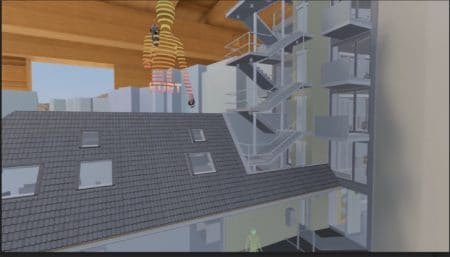
A view of The Wild that importantly shows that multiple stakeholders can be immersed and collaborating and be at different scales from each other in the same immersive experience.
Some of the features demonstrated at the Autodesk University show include:
- Friendly intuitive avatars that collaborate inside the space. I like the fact you can see through the avatars so you aren’t distracted by it.
- Portals to transport through spaces. A little disconcerting but you adapt to it quickly. It can be activated through a menu.
- Measuring tool to measure the size of objects.
- Sketch directly on whatever you wish and create massing objects for illustrating design ideas. It works the same way as a tablet. You draw using a button on the handset by clicking on a menu bar and selecting the drawing tool. Easy and simple interface. There is a “massing modeling” tool for creating primitives to demonstrate an idea inside of the VR scene to conceptualize ideas.
- Voice to text, creating a text bubble to leave a note in the VR environment by selecting the text to voice icon on the menu. At first, it didn’t exactly copy what I said to text but I can see with practice this gets better. You can leave the text note behind and later someone else can read it and use it for feedback.
- BIM 360 files stay up to date in The Wild with any changes in BIM 360. I watched the scene change in real-time.
This is a simple and easy to use VR solution with a lot of cool features to help visualize important design concepts and work with a team seamlessly in a single VR scene and give the ability to communicate ideas visually. Any level user can adapt to doing VR on the fly.
The Autodesk BIM 360 integration is an important feature. The Wild started with SketchUp support but quickly moved to support Autodesk Revit. It works with a wide variety of BIM and 3D software solutions but the integration with BIM 360 is another big win for Autodesk’s CDE platform.
Varjo
VARJO and Lenovo announced a co-operation agreement for technical and business collaboration between the two companies, at Autodesk University. The new partnership will create “Certified for Varjo” pairings on Lenovo desktop and mobile workstations for all Varjo Human HMD’s. This combines the world-leading professional VR/XR products with powerful high-end computers enabling enterprise organizations to adopt and implement VR.
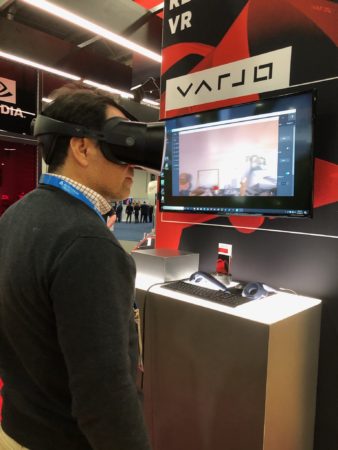
Architosh’s editor trying out the VR-1. Varjo’s VR-1 headset is by far the most expensive on the market but its “human-eye” resolution is astounding enabling entirely new types of workflows due to the visual fidelity and detail now possible in a virtual environment. (image: Akiko Ashley / Architosh. All rights reserved.)
I tried the Varjo human eye resolution headset—as did Architosh’s editor-in-chief, Anthony Frausto-Robledo—with its really cool features. The visual quality is like no other headset on the market.
- 20/20 Tracker that follows your eyes to create an experience personally fitted for you. Eye calibration helps to fit the headset, so it feels natural.
- Resolution of over 60 PPD and better peripheral vision. I can look around a room without seeing an edge.
- Integrated hand tracking by UltraLeap gives you the ability not to use handsets, or you can use handsets to navigate with point and click, so you can point to a place, click and you travel to that spot.
- An airport scene opened on the screen and you could select an object or plane to reveal information about the object or plane.
- High-end fidelity image quality (Human Eye resolution) so you can see the print of a book close up including the details where old text from a handwritten note had faded.
- Support for Steam VR and OpenVR will provide large third-party support offerings and integrations.
I have to say these are some of the best goggles I’ve ever used for VR considering I’m prone to vertigo. Eye calibration helps make the experience seamless. Anthony is planning to write some additional comments about Varjo in one if his upcoming reports as well.
Substance (an Adobe Company)
Substance’s booth was demonstrating Substance Painter, Substance Designer and the new Substance Alchemist showing off new features in Substance Painter that were announced at Adobe MAX.
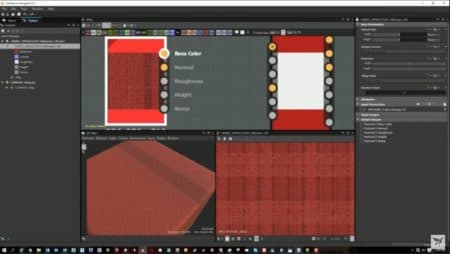
The node graph approach to working with the creation of materials (textures) for 3D rendering in Substance Designer.
Substance Painter Brush engine will match more closely to Photoshop’s.
- Enhancements include improving pen pressure accuracy, adding new brush settings, such as minimum size and blending modes, supporting ABR format.
- In the coming months, the team will ship a collection of ABR brushes alongside the next Substance Painter release.
- The demo shows how this makes it easier for users of the Creative Suite to embrace developing 3D projects using features similar to how they work in 2D.
Alchemist is out of beta. The flexibility in Alchemist allows you to create and manage your own library of 3D textures, mix, and tweak existing materials, and make entirely new materials from photos and high-resolution scans. Alchemist is easy to use and intuitive to how artists work.
Closing Comments
Autodesk’s slogan “Better Starts Here” is about technology empowering architects, engineers, designers, artists, graphic designers and real people to participate in creating “socially responsible” design.
Technology has a role in making the world a better place. As software moves to the cloud, AI automates repetitive tasks, and collaboration in VR helps us work with teams from anywhere in the world, we can now work more efficiently and be more productive than ever—helping people and companies do the best work of their lives now for a better world.
[Editor’s note: Hereo image


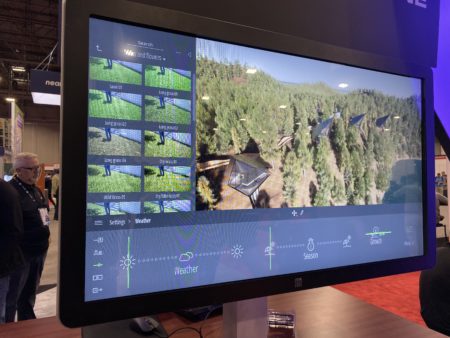
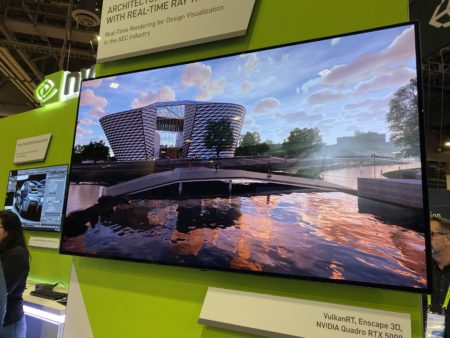


Reader Comments
Comments for this story are closed